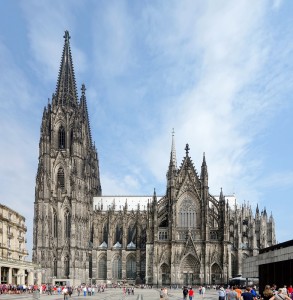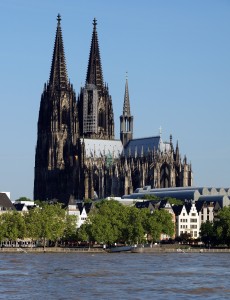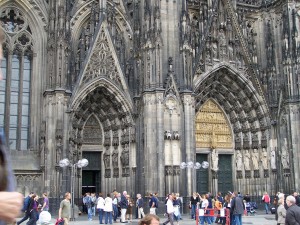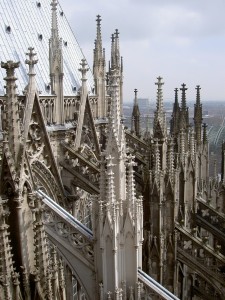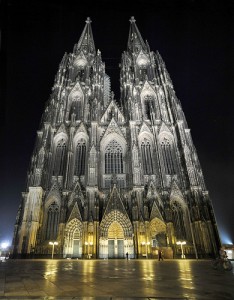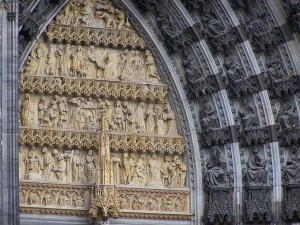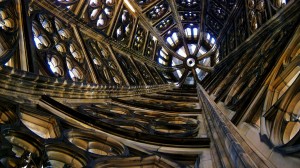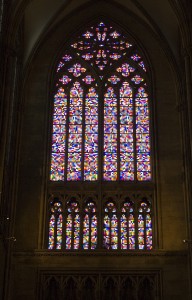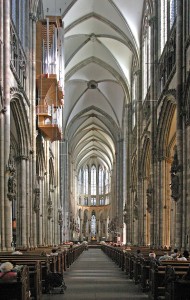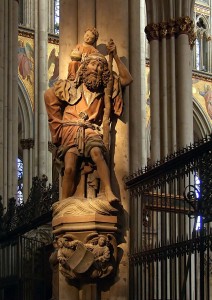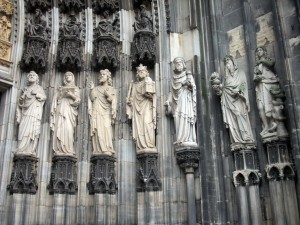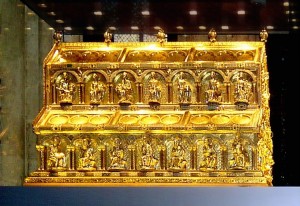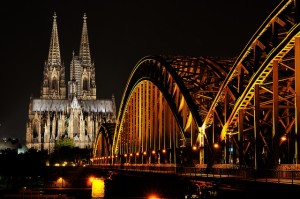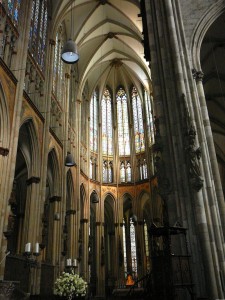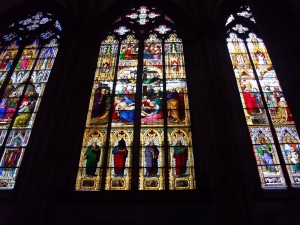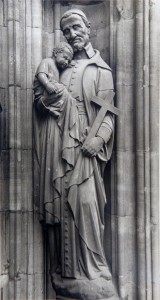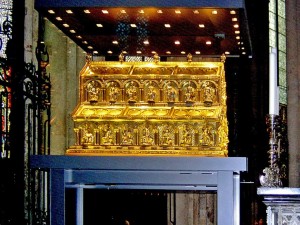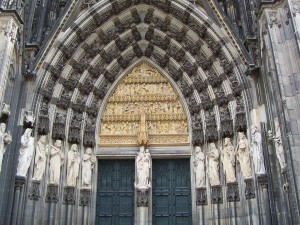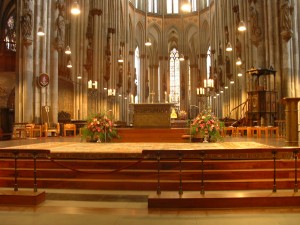Written by Soudip
October 6th 2014You Are Here
Home > Germany > Cologne Cathedral Historical Facts and PicturesCologne Cathedral Historical Facts and Pictures
The Roman Catholic Church, Cologne Cathedral, is the most visited landmark in Germany, with an average of twenty thousand visitors per day. In addition, it is the throne of Archbishop of Cologne, as well as a famous monument of German Catholicism.
Architecture and Design
Built in 1880, the cathedral is one of the finest embodiments of Gothic architecture. It is the largest Gothic cathedral in Germany and the tallest Roman Catholic Cathedral in the world. It consists of the largest façade in the world with two huge spires. The design of the structure closely resembles the Amiens Cathedral (France), in terms of style, ground plan and the height-and-width proportion of the central nave. The structure represents the usual Latin-Cross shape of Gothic cathedrals. The cathedral consists of one of the world’s highest vaults, supported by two aisles on either side of the structure. The exterior part of the building comprises the French-styled flying buttresses. There is an ambulatory at the eastern end of the cathedral.
Inside of the Cologne Cathedral
Decorated with carved stalls, the medieval choir reflects French-styled arrangement of a narrow delicate triforium gallery with detailed tracery and a tall arcade. The nave consists of many nineteenth century stained-glass windows. Gifted by Ludwig I of Bavaria, a set of five windows on the south, known as the Bayernfester, represents the painterly German style of that period.
Installed in 1322, the High Altar is one of the main treasures of the cathedral. Built with black marble and a solid 15 ft. long slab, the altar is overlaid with white marble niches from the front and sides. Containing the bones of the Biblical Magi or The Three Wise Men, the Shrine of Three Kings is the most notable work within the cathedral. Commissioned by Philip von Heinsberg, the large gilded and decorated shrine is placed behind the high altar.
A powerful symbolic embodiment of Christian belief, this architectural masterpiece is included among the UNESCO World Heritage Sites.
Category
GermanyWritten by Soudip
October 6th 2014



